It is only late in the Christian religion that the seating appears for the comfort of the faithful. Another important
evolution: the elaborate style of the stalls or the priest’s seat from the 16th to the 19th century was replaced in the 20th century by a functional and uncluttered style.
The bench of the faithful
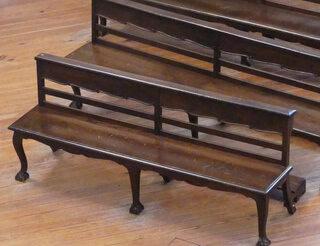
Did you know that?
- In the Middle Ages the faithful attended Mass on their feet or on their knees. It was not until the 16th century, and longer and longer masses, that seating appeared for the faithful. Moreover, in the Muslim religion the prayer time remains short (5 to 20 minutes) and one continues to pray standing or on one knees. This difference can be seen at the Mosque-Cathedral in Cordoba, Spain.
- In the churches the fixed arrangement of the pews that we know today dates only from the 19th century. Previously the benches were rented.
- The church bench is devoid of cushions. It is also too low for people of above-average size and is therefore quickly uncomfortable (lack of circulation at the ischiatic zone). The alternation of sitting and standing during mass compensates for this discomfort, while keeping the faithful awake.
- The bench may also be devoid of a backrest for space saving.
Stalls for the clergy
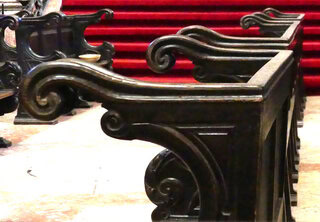
These are benches with armrests or seat series placed on both sides of the choir. They are reserved for members of the clergy.
Above is a picture of a stall with very long armrests to be able to get up more easily.
Once very elaborate, stalls are now making way for more streamlined and modern versions (pictured above of carved wooden stalls and below no frills). The h
eight of the folder, however, is kept as a distinctive sign to illustrate a higher rank in the ecclesiastical hierarchy as illustrated in the photo below.
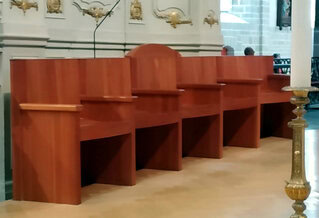
Below is a richly ornate stall chair seen from above.
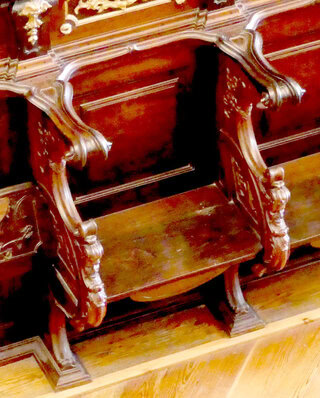
The chair for the priest and the stool for the co-celebration
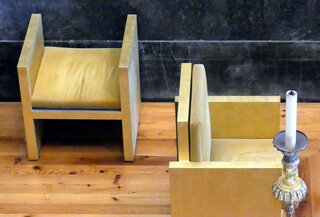
The file is synonymous with comfort but also importance. In the photo below it is easy to distinguish the chair seat which can only be occupied by the celebratory priest and that of the co-celebrant.
Pillows improve comfort.
The style is deliberately purified to avoid any appearance of throne.